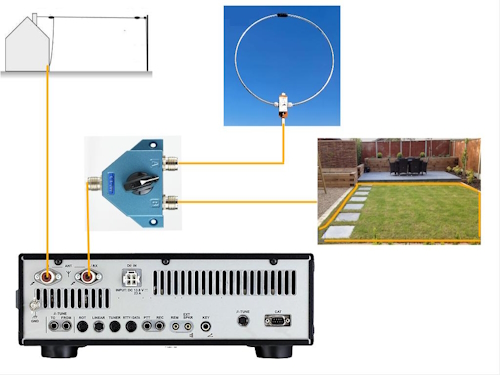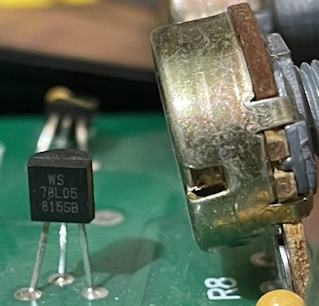Home.
July 2025 - Alternative Receiving Antennas.
Local ham Mike suffers significantly more local noise than most of us have to contend with. On 40m he can really only hear stations with a big signal.
A few weeks ago we tried my WellBrook Active Loop ALA1530.
Small loops like this are said to be more sensitive to magnetic fields, the loop minimizes the reception of electric field noise that can interfere with the signal. These loops are also directional so you could mount one on a rotator to maximize reception, but if you have a single overwhelming noise source you are advised to optimize the loop direction for minimum noise level. This made a huge difference right away for Mike. S9+ of noise on 40m was reduced to S2 while wanted signals could still be heard on the Welbrook loop.
On the strength of the first tests, Mike ordered a £25 cheaper alternative active loop from EBay and together we 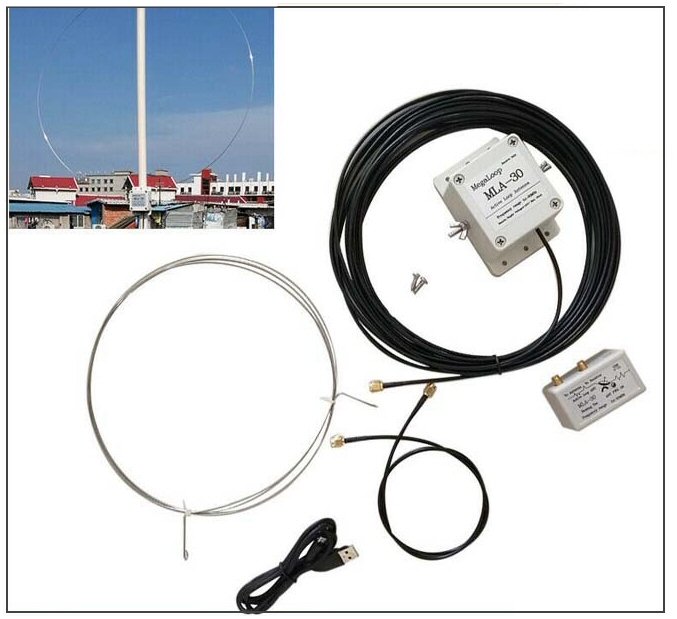 erected it on a tall tripod and found it worked pretty much as well as the Wellbrook had..
erected it on a tall tripod and found it worked pretty much as well as the Wellbrook had..
Having nulled the noise coming from Mike's neighbour, we tuned 40m on the long wire and found an S9 station which could just about be understood against a background of S9 noise. Switching over to the active loop, the noise dropped significantly and the 40m station was now perfectly clear with an S3 reading on the radio. It was pretty much the same story when we tested on the 20m band.
The active loop now needs to be mounted more permanently, so we then moved onto trying another possibility for noise reduction. This was the "Loop on the Ground" (LOG) - as demonstrated by countless delighted proponents on Youtube. Among these hams was Callum of the DxCommander company.
We laid a nice size loop of insulated stranded "hook up wire" around the perimeter of the garden and the two ends were terminated on a 1:1 balun that I had kicking around my shack. As with the active loop, there were stations that we couldn't hear on the long wire, but the LOG produced quite readable signals that were just S2-3 in strength.
To make all this practical, Mike's FTDX 1200 has a setting that allows transmission on "Antenna 1" and reception on "Antenna 2". If you have this radio then I direct you to page 44 of the owners manual.
This caution with configuration is very neccesary because if you inadvertantly transmit into the active receiving loop you will probably destroy the wide band amplifier contained within. Were you to transmit into a loop on the ground the SWR would be quite awful and all you would do anyway (if your radio output stage survived), would be to warm up a few nearby worms.
Lastly, we connected a BHI NES-10-2 noise canceling DSP loudspeaker to the Yaesu. While on it's own, the speaker did not help enough with the S9 noise, it did add a little extra benefit when either the LOG or the active loop were in use.
The balun that we used on the LOG was wound on a type 62 core that I had in the junkbox.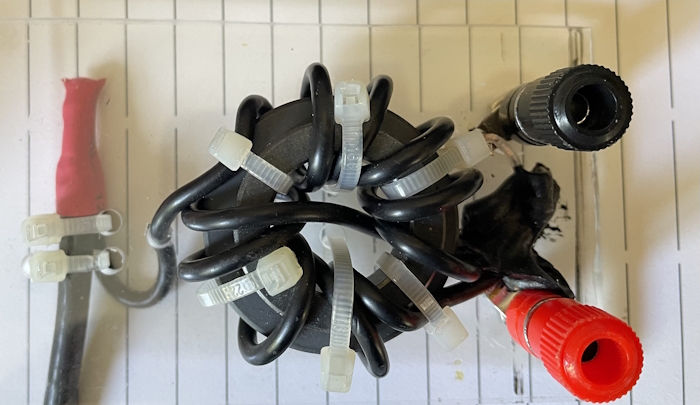
Earlier, I had found that at home that I couldn't detect much difference in signals received whether the balun was in circuit - or the LOG directly connected to the feeder.
However, at Mike's QTH where the noise levels are really bad, we observed 2 S points greater noise when the balun was omitted.
Feeding the LOG with a balun makes a big difference.
Now my home made 1:1 balun is not what KK5JY (who many cite as a source of LOG wisdom) recommends. He advocates an isolation transformer with 2 turns on the primary and 6 on the secondary. You can buy a nice looking LOG balun for under 9 pounds UK from Radio Stuff and this kit follows the advice from KK5JY . I can attest that Radio Stuff provide great service having ordered a couple of items from them recently. There is a helpful build video for the balun here.
Mike now has two alternative receiving strategies because we think that both receive antennas would be worth keeping. The plan is that an antenna switch will be provided in the shack to allow either the LOG or the Active loop to be selected.
This drawing shows the eventual idea for both strategies.
G0CNN demonstrates the effectiveness of two sizes of loops in this video
He also shows some quite awful pulsing noise being eliminated on the LOG.
Postscript
I previously wrote about noise cancelling devices that use phasing techniques.
Mike had bought one and it didn't work. His model looks like this:
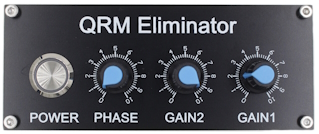
Having taken it apart I could see why. There is an input provided for your regular aerial and another for a short aerial that is enough to "hear" just the local noise. Each input has an amplifier provided by a JFet. Except that as you can see below, the factory had soldered in 5 volt regulators instead.
Once I had replaced them with actual JFets it was fine.
I can see how the unit could help further if it was placed between the antenna switch and the radio in the above drawing.
When powered down these units pass the signal through.
When powered up, they can be used to phase out the local noise.
A better known version of this device is the MFJ 1025 (if you can find one used).
